Programs & Services

An in-depth understanding of land and natural resource conflicts is a priority in the development of knowledge on mediation in Indonesia.
We focus on developing and managing knowledge resources on land and natural resource conflict management in Indonesia. Through research, studies and documentation, we generate in-depth understanding to support sustainable conflict management. The results of our analyses and case documentation are used as lessons for practitioners and stakeholders. Our research captures mediation principles that are relevant in the Indonesian context, enriching insights into effective strategies and methodologies in addressing these conflicts.
Publication of learning outcomes is disseminated through the publication of the Layang Damai Kalawarta, case handling documentation, website, and social media. CRU Indonesia also actively participates in meetings and webinars to broaden understanding of land and natural resource conflict resolution in Indonesia.
Some of the research that has been done:
- The Cost of Conflict in the Palm Oil Sector in Indonesia: The Cost of Land and Natural Resource Conflicts from a Ccmpany Perspective.
- The Cost of Land and Natural Resource Conflicts from a Community Perspective: A summary.
- The Cost of Land and Natural Resource Conflicts from a Government Perspective
- Spatial Planning, Land Tenure and Conflict; Colliding Land Claims in Sumatra and Kalimantan: Between the Demands of Economic Growth, Policy Dynamics and the Rate of Land Investment.
- Practical Guide to Handling Land-based Conflicts (Indonesian version).
- Lessons Learnt from Mediating Natural Resource Conflicts in Indonesia and Other Countries. (Indonesian version).
- Seka Sengketa: Pergulatan Pengalaman Resolusi Konflik
- Conflict Sensitive Development.
1. The Cost of Conflict in the Palm Oil sector in Indonesia.
Conflict Costs of Land and Natural Resources from a Corporate Perspective.
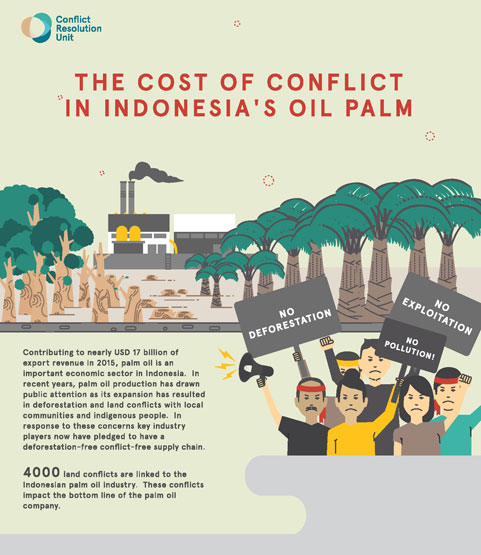
The findings of Daemeter’s research for the Conflict Resolution Unit (CRU) showed that conflict is very detrimental to palm oil companies. “The accumulation of costs due to social conflict is significant but neglected, but has the potential to hinder the productivity of the company and can harm communities and local governments.” The purpose of this study was to analyze the costs incurred due to social conflicts in the palm oil sector.
This research showed that tangible losses directly suffered by palm oil businesses as a result of social conflicts could reach 2,500,000 US dollars. The largest cost losses were due to the loss of plantation operating income and the working time of the employees ehich had to allocated to addressing the conflict. There were also findings showing that “intangible” cost losses could amount to US$ 9,000,000 in indirect losses due to the risk of recurring conflict or worsening of the conflict, losses due to deteriorating business reputation and the risk of violence against property and people.
Some of the general conclusions of this research on conflict in the palm oil sector are that the depletion of resources (land and livelihoods) is the main cause of conflict; conflicts tend not to start with violence; conflicts often recur; and conflicts tend to occur in the production phase.
Some of the important recommendations of this study are among others; palm oil companies need to improve conflict-related managerial policies and procedures; the need for more research on the causes, progression, and implications of conflict; and the need to develop better conflict prevention, handling and resolution practices than is currently common.
Download: Executive Summary | Report | Infographic | Press Release
The Cost of Land and Natural Resource Conflicts from a Community Perspective.
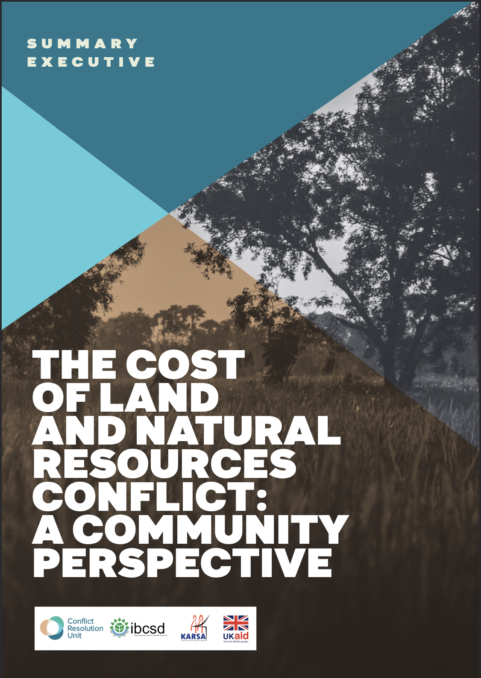
In addition to the study on the costs of conflict from the company’s perspective, CRU also initiated a study on the burden to be borne by communities that are facing conflict. One of the consequences of the many cases of land and natural resource conflicts is the cost of conflict that must be borne by each party, including by the communities. The study tried to measure the costs and losses due to land and natural resource conflicts that are borne by community households. This study is a case study conducted in the Village of Bungku, Jambi; Muara Tae, East Kalimantan and the Trimulya village, West Kalimantan. The study found that the companies’ presence resulted in a shift in people’s consumption pattern in the researcharea. Previously, people freely gathered various natural resources necessary for their lives from the surrounding nature, however, since the presence of the companies, community members had to rely entirely on the market system to meet their livelihood needs.
On average, as much as 36.79% of the value of the commodity consumption of respondents today, could be obtained freely in the past. Furthermore, each household must bear the average conflict cost of Rp. 41,754,672.00 per year. This study found that the impact of the conflict was more felt by families who owned oil palm plantations and/or participated in plasma-core schemes as compared to those who did not have oil palm plantations and/or participated in plasma-core schemes. Families owning oil palm plantations and/or participated in plasma-core schemes experienced a greater rate of decrease in consumption amounting to 37.35% and bore a total conflict cost of Rp. 51,617,040.00.
Download: Report | Infographics | Summary in English
2. Land and Natural Wealth Management Conflicts
Spatial Planning, Land Certainty and Conflict; Land Claims Collision in Sumatra and Kalimantan: the Demands of Economic Growth, Policy Dynamics and Land Investment Rate.
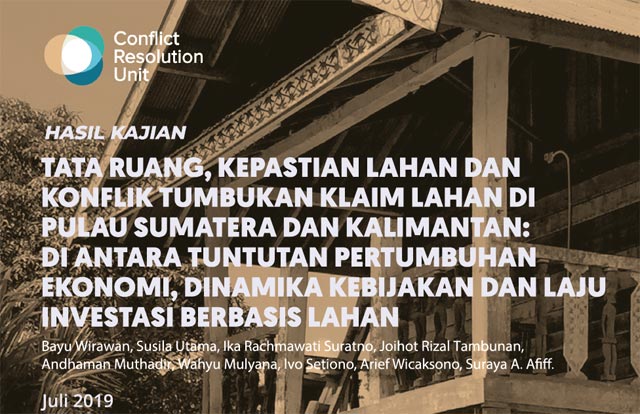
The visible land and natural resource conflicts in Indonesia are actually only the tip of the iceberg of a number of problems and other factors that are not visible as they are below the surface. One of the factors is the high dynamics of policy changes that continue to occur amid the demands of economic growth.
In addition, the high level of land demand for various interests, including the expansion of large-scale land-based industries such as oil palm plantations, industrial plantation forests (HTI) to support the paper industry, and mining, is not in balance with the legal certainty of spatial policy, even though spatial policies are intended to maintain the balance between economic interests and environmental sustainability.
This case study on spatial planning, land certainty and land claims conflicts on the islands of Sumatra and Kalimantan reveals empirical evidence of potential conflicts that arise when the spatial planning processes are incomplete and inaccurate. Those deficiencies are creating gaps that are perceived as opportunity to be utilized by some parties as “justifications” for their actions. It is why it is important to include spatial analysis in the reading of land-based conflict cases to be able to gain an adequate comprehension of the case thoroughly and design a thorough case resolution process.
Download: Report
Lessons from Natural Resource Conflict Mediation in Indonesia and Other Countries
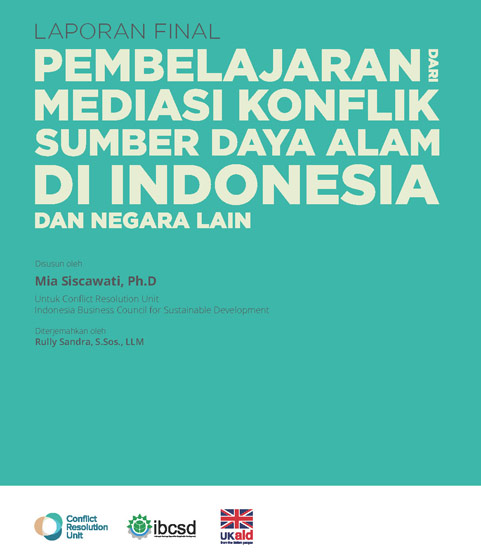
Mediation processes not only reduce disputes and generate agreements, but also have the potential to transform the relationships of the parties into mutually beneficial interactions. But to achieve that a mediator or a team of mediators must double as facilitators, advisors and capacity development workers to assist the conflicting parties. These are the findings of the study on “Best Practices of Mediation of Natural Resource Conflicts in Indonesia and Other Countries”. This research is a manifestation of Conflict Resolution Unit (CRU) commitment in its efforts to support the best practices in conflict mediation related to natural resources and land in Indonesia. Moreover, those findings state that the multiple roles of mediators provide more space to understand the parties and recognize their respective interests so as to be able to formulate recommendations that can help them to resolve their problems.
One of the case studies was the journey of the people of the Banten Karang kasepuhan in their effort to legalize wewengkon land as part of customary land. In this case, participatory mapping conducted with the community of the Kasepuhan of Banten Kidul became one of the important stages in the conflict resolution process. It did not only generate maps, but the participatory mapping process also allowed members of the kasepuhan to think about the sustainability of their region. Using a comparative analysis approach, this study studied the process of conflict resolution, including recognizing important parts of each conflict resolution process.
Download: Executive Summary | Report
3. Development of Methodologies in Handling of Land and Natural Resource Conflict.
Supporting Conflict Sensitive Development: Insight from Mediation Practitioners in Indonesia
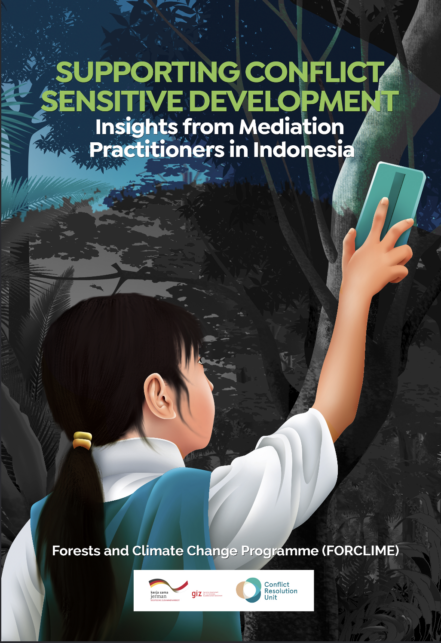
The piling up of unresolved agrarian conflict cases implies the question of the effectiveness of the conflict resolution approach used. How are conflict resolution approaches implemented in helping conflicting parties reach a peace agreement between them, and even moving the parties towards long-term cooperation? The Conflict Resolution Unit (CRU) in collaboration with the Forest and Climate Change Program (FORCLIME) of GIZ, initiated a documentation and learning project on the mediation of multi-party conflicts as an effort to contribute to the knowledge on how to manage and resolve agrarian conflicts in Indonesia. This documentation tries to record learnings from the mediation experience and at the same time make critical analysis of the experience of the mediator team involved that was supported both by CRU and FORCLIME.
Download: Report | Download English Summary Report
